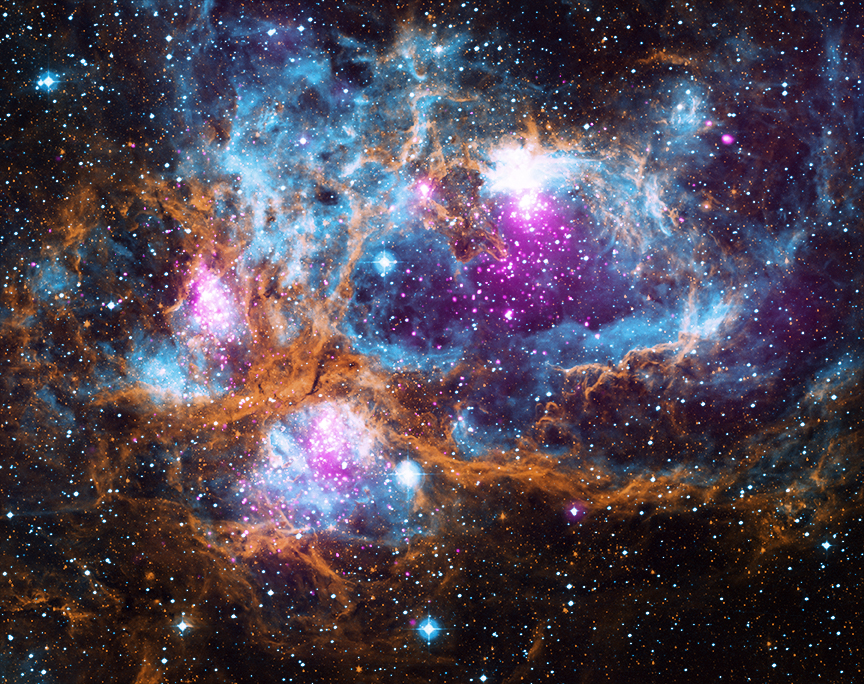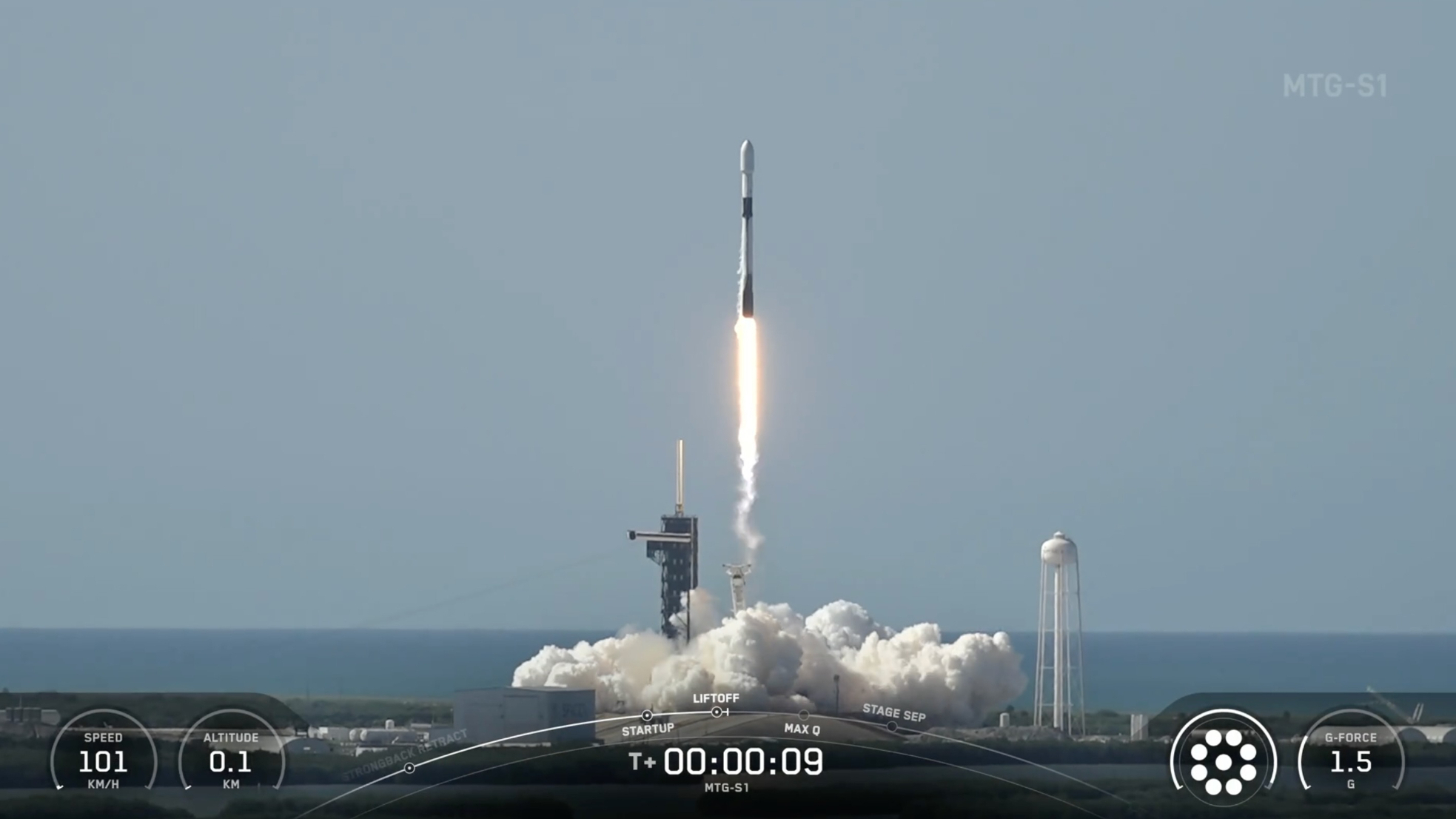'Winter Wonderland' Glows in Space as Nebula Is Wreathed in Wintry Colors

It's snowing in space! Well, not really — but astronomers are calling this colorful nebula a "winter wonderland." With that frosty blue hue and flurries of stars speckled across cosmic clouds, this wintry nebula is simply stunning.
This cloud of cosmic gas and dust is NGC 6357, also known as the War and Peace Nebula — a nickname that stems from its shape, which some say resembles a dove on one side and a skull on the other. It resides about 5,500 light-years away from Earth in the constellation Scorpius.
Festive colors in the image are a combination of several different observations made from 2004 to 2016 by two of NASA's space telescopes, the Chandra X-ray Observatory and the Spitzer Space Telescope; the now-defunct German Roentgen Satellite (ROSAT); and the United Kingdom Infrared Telescope's SuperCOSMOS Sky Survey (SSS). [Check Out Our 100 Best Space Photos of 2016]
X-ray data from Chandra and ROSAT are shown in purple. The brown-orange color represents infrared data from Spitzer. Its frosty blue highlights represent optical, or visible light observations, from SSS. The resulting composite is an image so vibrant and fun that it would make for a stellar design on a painted tree ornament.
"NGC 6357 is actually a 'cluster of clusters,' containing at least three clusters of young stars, including many hot, massive, luminous stars," NASA officials said in a statement. "The X-rays from Chandra and ROSAT reveal hundreds of point sources, which are the young stars in NGC 6357, as well as diffuse X-ray emission from hot gas. There are bubbles, or cavities, that have been created by radiation and material blowing away from the surfaces of massive stars, plus supernova explosions."
Young, hot stars in NGC 6357 emit powerful radiation that strips hydrogen atoms in the surrounding gas of its electrons. Astronomers call this type of ionized hydrogen cloud an HII region. Those young stars also emit bright X-rays, which is why researchers use Chandra and other X-ray telescopes to look at them.
Email Hanneke Weitering at hweitering@space.com or follow her @hannekescience. Follow us @Spacedotcom, Facebook and Google+. Original article on Space.com.
Breaking space news, the latest updates on rocket launches, skywatching events and more!
Join our Space Forums to keep talking space on the latest missions, night sky and more! And if you have a news tip, correction or comment, let us know at: community@space.com.

Hanneke Weitering is a multimedia journalist in the Pacific Northwest reporting on the future of aviation at FutureFlight.aero and Aviation International News and was previously the Editor for Spaceflight and Astronomy news here at Space.com. As an editor with over 10 years of experience in science journalism she has previously written for Scholastic Classroom Magazines, MedPage Today and The Joint Institute for Computational Sciences at Oak Ridge National Laboratory. After studying physics at the University of Tennessee in her hometown of Knoxville, she earned her graduate degree in Science, Health and Environmental Reporting (SHERP) from New York University. Hanneke joined the Space.com team in 2016 as a staff writer and producer, covering topics including spaceflight and astronomy. She currently lives in Seattle, home of the Space Needle, with her cat and two snakes. In her spare time, Hanneke enjoys exploring the Rocky Mountains, basking in nature and looking for dark skies to gaze at the cosmos.
